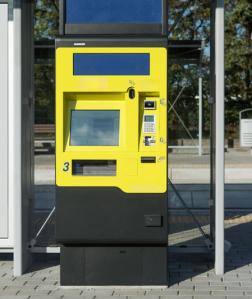In the world of display technologies, especially when considering outdoor applications, the choice between transmissive and transflective displays is pivotal. Both technologies bring their own strengths to the table, particularly when facing the challenges of outdoor readability under the sun's bright glare.
Let's explore these technologies to understand their unique features and the scenarios where each might be best utilised.
Understanding Transmissive Displays
Transmissive displays, which form the backbone of most TFT screens, rely on backlighting to illuminate content. This technology excels in lower light conditions, offering vibrant colours and sharp images.
IPS (In Plane Switching) TFT technology has superior colour accuracy and wide viewing angles, making it a favoured choice for applications where visual quality is paramount.

Advantages:
Vibrant Colours and Sharp Images: Ideal for multimedia content, offering a rich visual experience.
Uniform Brightness:
Ensures consistent illumination across the entire screen.
Wide Viewing Angles:
Allows content to be viewed clearly from various positions without quality loss.
Considerations for Use:
While they are perfect for indoor environments or areas with controlled lighting, without careful design considerations, transmissive displays may face challenges in direct sunlight. Adding optical bonding techniques and anti-glare coatings significantly improved their outdoor usability, and ensuring the backlight is optimised for the display’s location is key. Transmissive Displays are particularly suited for applications where high colour fidelity and brightness are crucial, such as in advertising displays, information kiosks, and entertainment systems.
Stepping Into the Light with Transflective Displays
Transflective displays cleverly combine reflective and transmissive technologies, using ambient light to improve screen visibility outdoors.
They're adaptable, switching on the backlight when it gets darker. This duality makes them ideal for gadgets that need to perform under a variety of lighting conditions.
Advantages:
Sunlight Readability: Utilises natural light for better visibility in bright conditions.
Energy Efficiency: Reduces or even eliminates the need for backlighting in well-lit environments, conserving battery life.
Adaptable Lighting: Seamlessly switches between reflective and transmissive modes to suit varying lighting conditions.

Considerations for Use:
Transflective displays excel in outdoor and variable lighting conditions, ensuring sunlight readability without compromising on power efficiency. Although they might lack the colour vibrancy of transmissive screens, their adaptability and low power consumption make them perfect for outdoor devices like handheld GPS units, where maintaining visibility in sunlight without rapid battery drain is crucial.
What about Reflective Displays?
For applications displaying static information or simple graphics, such as passenger timetables, a pure reflective technology display such as e-Paper offers a near zero-power solution.
It leverages ambient light, eliminating backlighting and lowering energy consumption, making it ideal for bright environments, prolonging battery life and enhancing sustainability.

Choosing Your Champion
The selection of which display technology to use depends on the specific needs of your application. For scenarios requiring vibrant graphics and consistent screen brightness, transmissive displays are unmatched. However, for outdoor applications where energy efficiency and sunlight readability are priorities, transflective or even ePaper displays could be preferred.
As display technology evolves, the quest for the ideal balance of brightness, efficiency, and colour fidelity continues. For applications demanding static information with minimal updates, e-ink displays offer an energy-efficient alternative.
Ultimately, the evolution of display technologies provides a broad spectrum of solutions tailored to meet diverse needs, ensuring optimal visibility, efficiency, and aesthetic appeal across a variety of applications.


